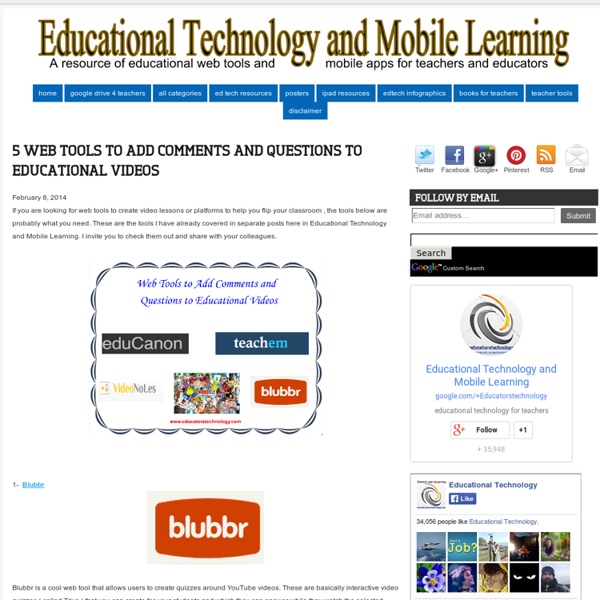5 Web Tools to Add Comments and Questions to Educational Videos

8 Good Web Tools to Create Video Quizzes for Your Class
Vialogue (Video + Dialogue ) is an online video with a group discussion feature. Vialogue allows users to interact with videos by adding time stamped comments to them. This can be a great tool for teachers to use with their students to get them engaged in video prompted discussions.To get started, upload a video, grab one from YouTube, or choose one from the growing collection on our site. Once you’ve created a vialogue, you can encourage thoughtful conversations by posing questions, adding polls, and replying to comments. You can even embed a vialogue into your website, LMS, or blog! VideoNotes is a free web tool that allows students to take notes on a video they are watching. 3- Edpuzzle This is a web tool I have just learned about from my colleague David Kapuler. 4-Google Forms Google Forms has made it possible for users to insert YouTube videos into their forms. 5-TedEd TED Ed is a website that allows teachers to create lessons around YouTube videos. 6- Educanon 7- HapYak 8- Blubbr
Related:
Related:



